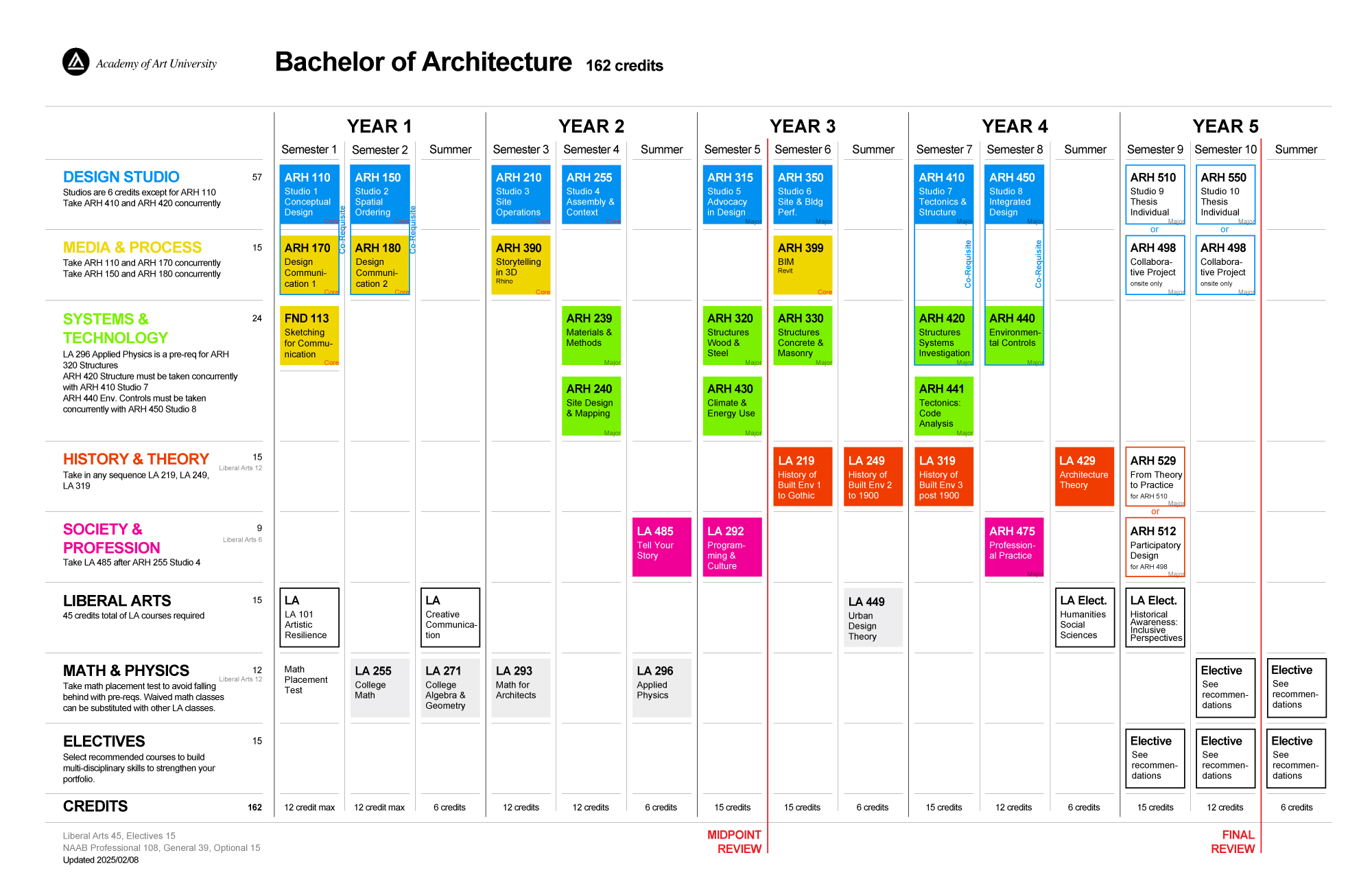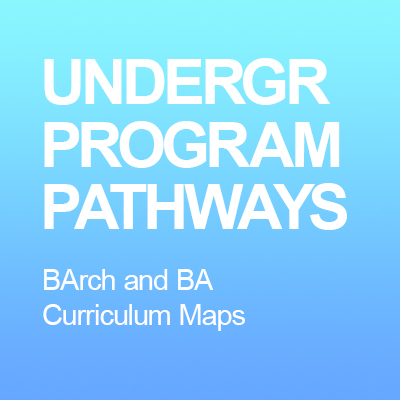
Fundamental design, ethical awareness, and liberal arts prepare students for the upper division courses in which students engage with the profession within and beyond the classroom through a rich array of field trips, firm visits, networking events, and internship opportunities. Our rigorous design studio curriculum prepares students to contribute meaningfully to the built environment. Students gain critical thinking and research skills, in addition to design and technical skills, to be prepared for the evolving profession.
The Bachelor of Architecture program is accredited by NAAB and satisfies the education component of the US architectural licensure requirements. The length and outcomes of all B. Arch programs must follow NAAB Criteria. The 150-unit program applies to students who entered the program in Fall 2025 and after. View course descriptions
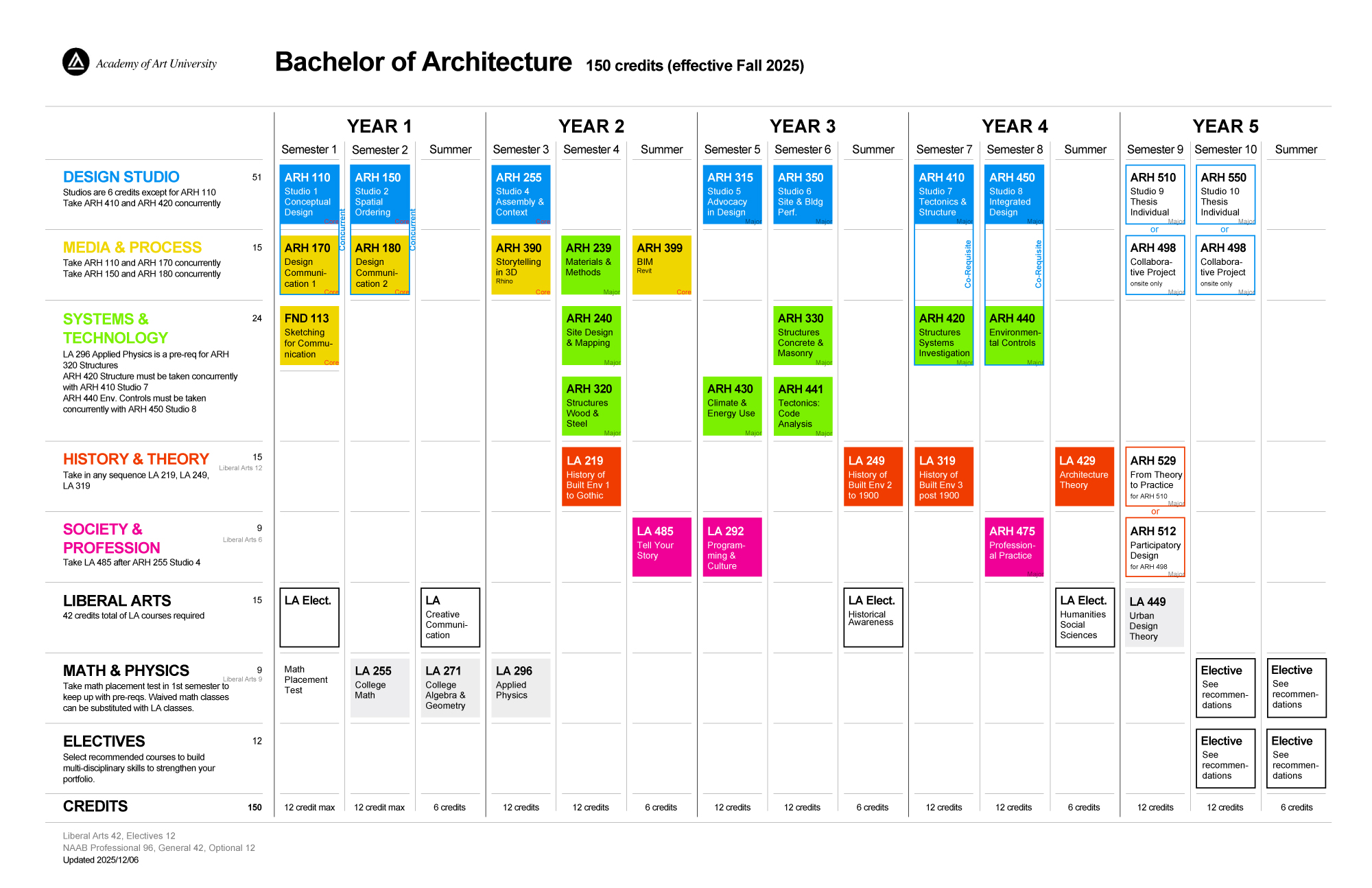
The B. Arch IPAL track is a shorter path to architectural licensure in the states that accept the IPAL program. Students simultaneously complete requirements for Education, Experience, and Examination by accruing work experience in architecture and taking licensing exams while taking classes. Students are supported in applying for jobs, that qualify towards licensure requirements, through coursework and mentorship. IPAL track students take reduced course loads to balance course work with professional work while also taking licensure exams. Students who complete all three requirements are eligible to be licensed upon graduation. In Northern California, Academy of Art University is the only Architecture School that offers the IPAL program as of 2025.
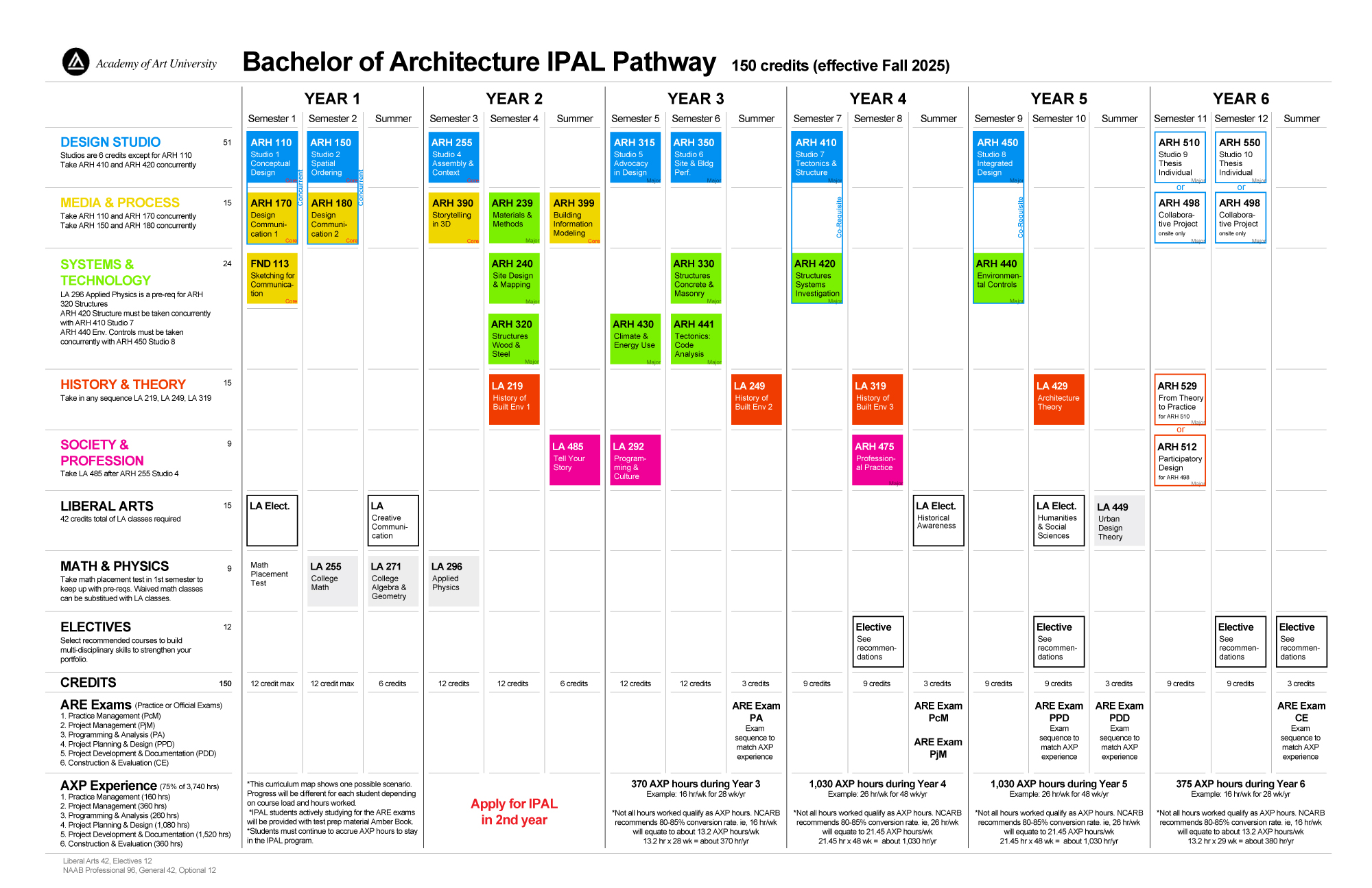
The Bachelor of Arts in Architecture (BA) program provides a robust foundation in architectural design with skills transferrable to related disciplines. The ability to define a problem, work through design iterations, and refine evaluative criteria are some of the transferrable skills that will prepare students for multidisciplinary and interdisciplinary design practices within and beyond architecture. With an emphasis on building strong portfolios, students have the option to pursue graduate school or employment in architecture or related fields upon graduation. Curricular flexibility enables students to select courses that best prepares them for their individualized goals. In the State of California, the BA degree offers a modified path to architectural licensure. The 120-unit program applies to students who entered the program in Fall 2023 and after. View course descriptions
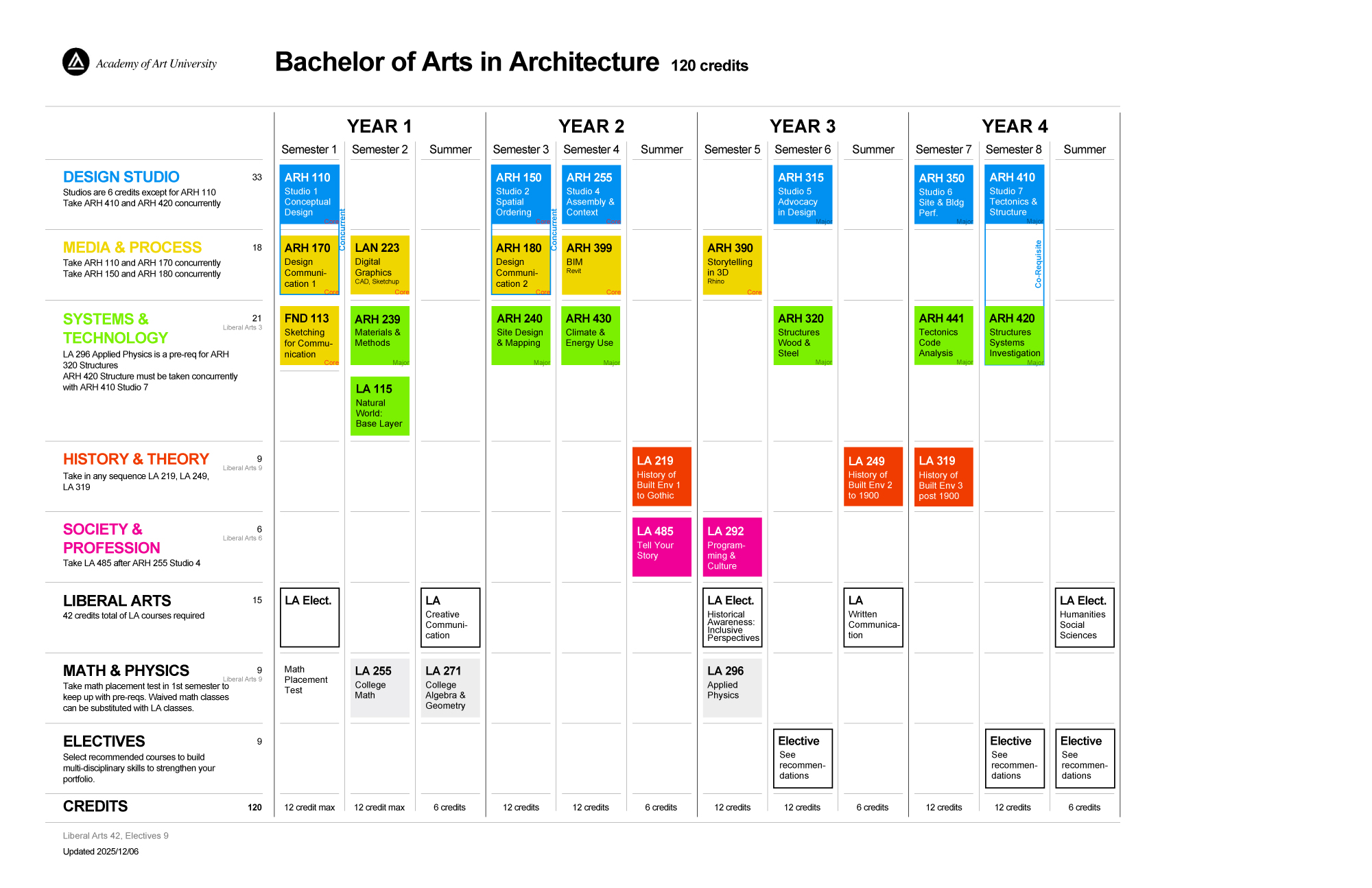
The 60-unit Associate of Applied Science (AAS) program in Design of Built Environments (DBE) prepares students for entry level employment in the fields of Architecture or Landscape Architecture. In the first year, students are introduced to both fields. In the second year, students declare emphasis either in Architecture or Landscape Architecture and the paths diverge. After completing the AAS program, students have the option to seamlessly transition to BA in Architecture or BFA in Landscape Architecture. View architecture course descriptions. View landscape architecture course descriptions.
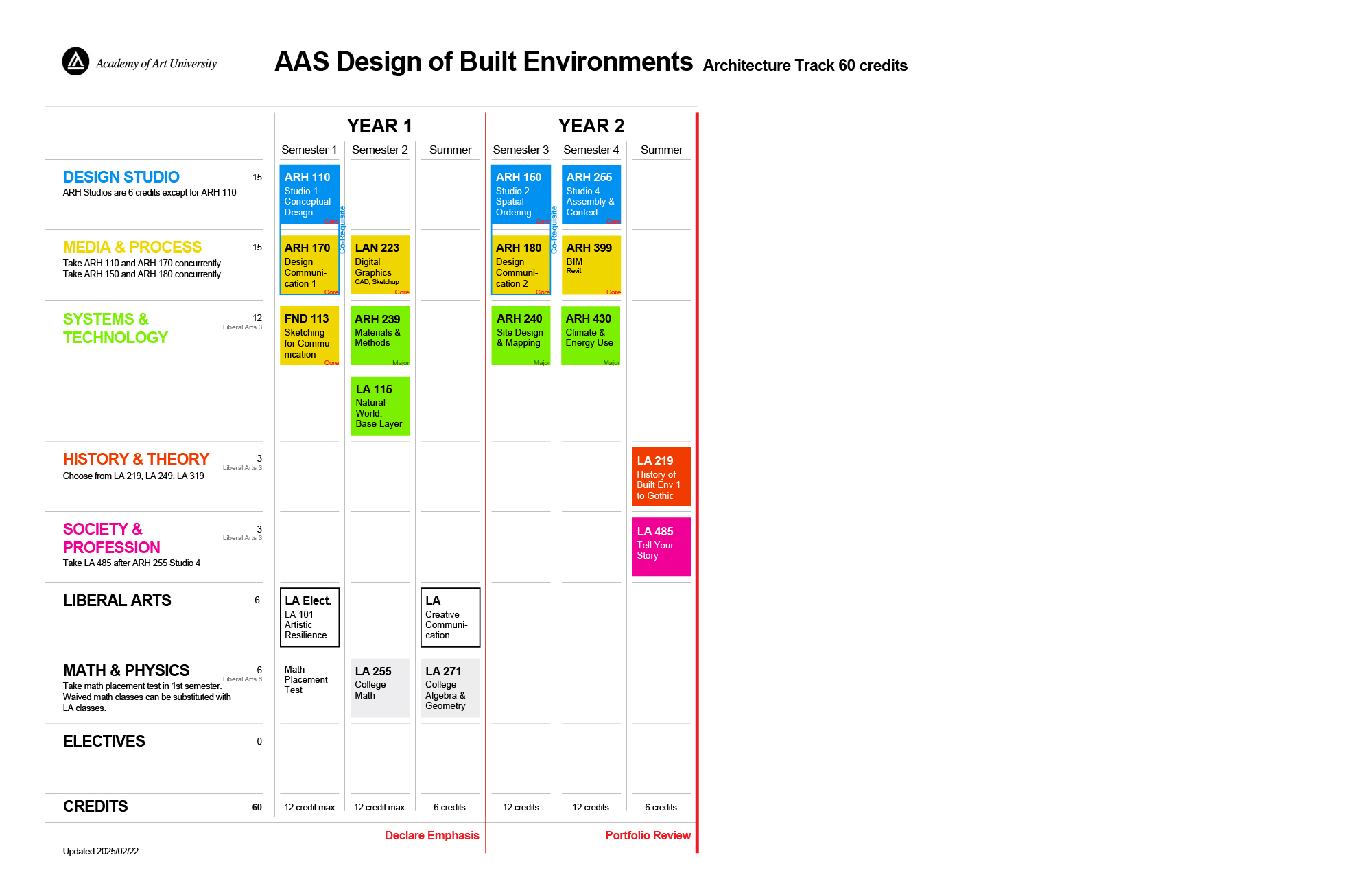
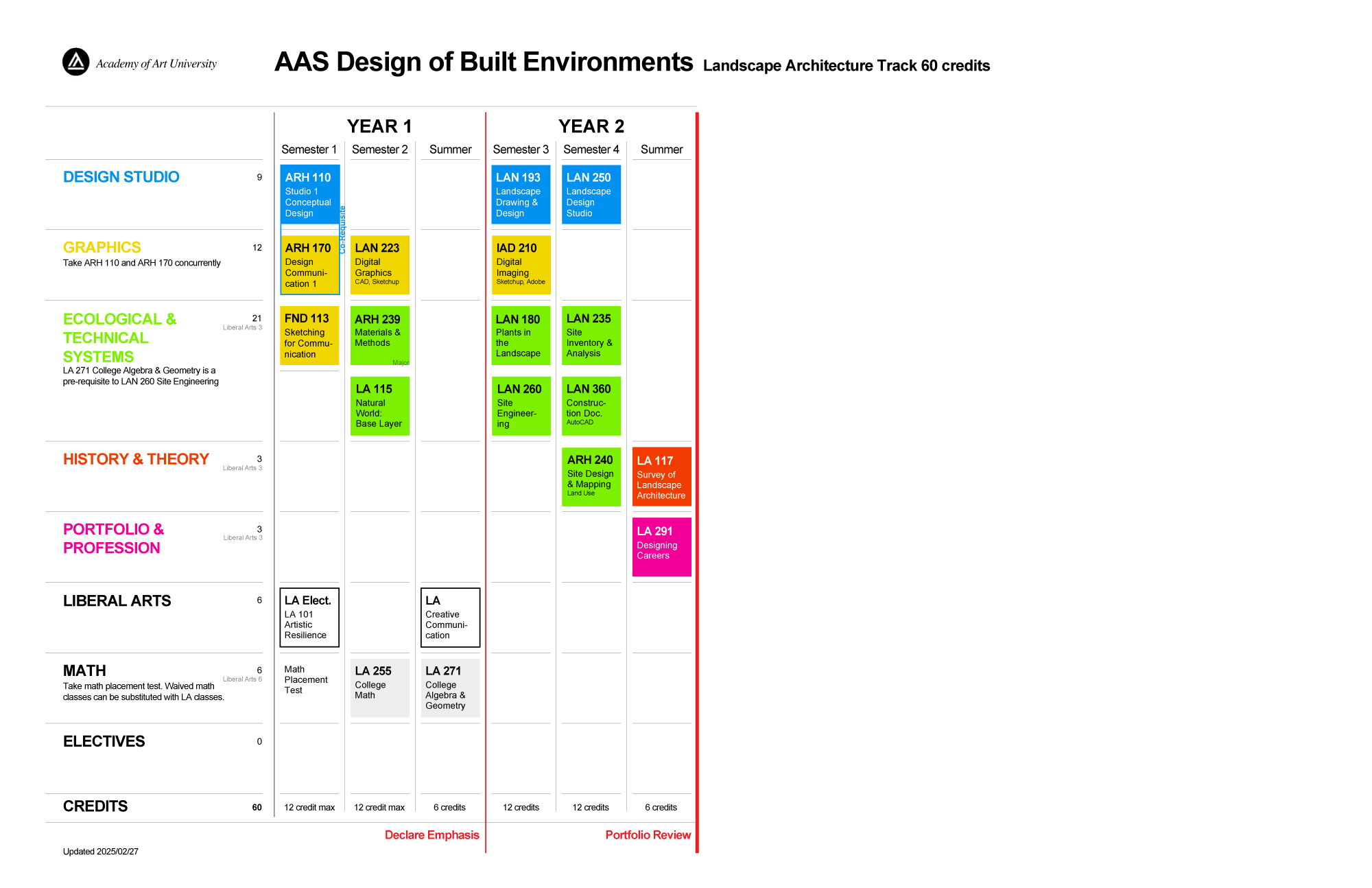
The Bachelor of Fine Arts (BFA) in Landscape Architecture program focuses on the development of flexible design processes for landscape and urban design, an understanding of ecological systems, sustainable practices and use of materials, site planning, and advanced drafting and rendering techniques. View course descriptions
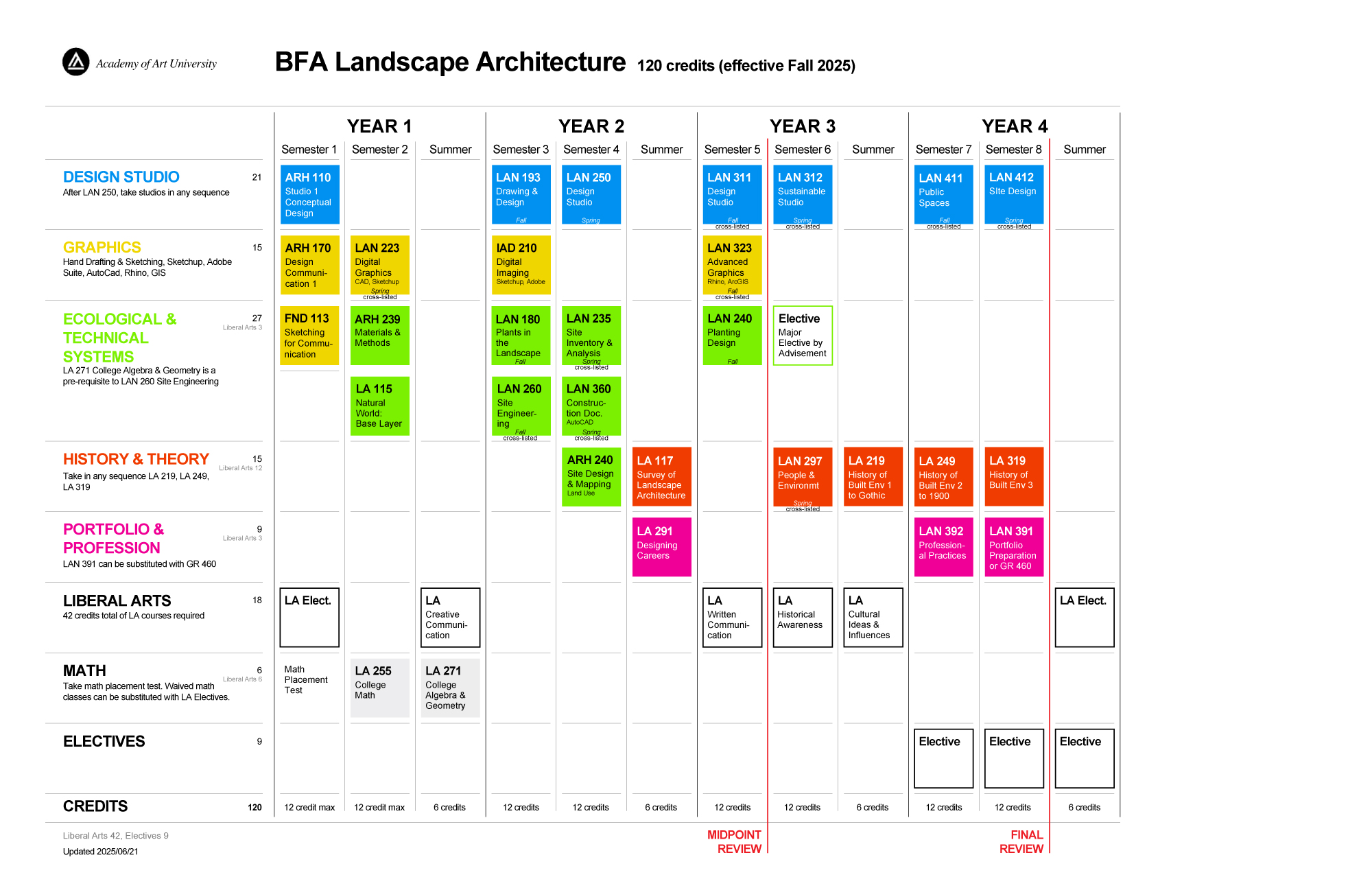
The 132-unit program applies to students who entered the program before Fall 2023. The Bachelor of Arts in Architectural Design is grounded in environmental design, providing a relevant and engaging studio-based and portfolio-driven undergraduate education. Students will develop their abilities and understanding in architectural design, art, architectural history and theory, fundamentals of sustainability and building tectonics, as well as advanced design representation tools.
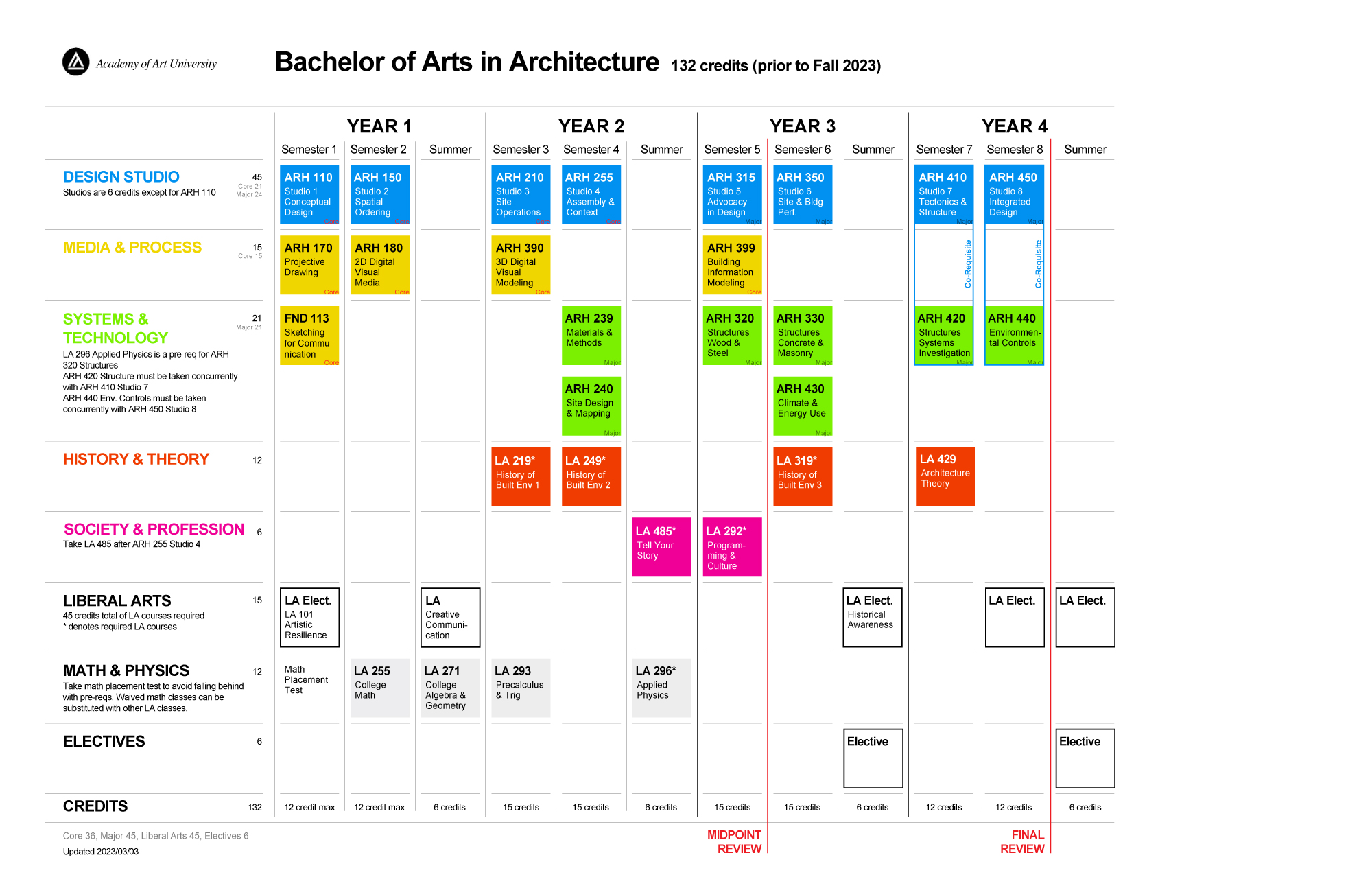
The 162-unit program applies to students who entered the program before Fall 2025.
